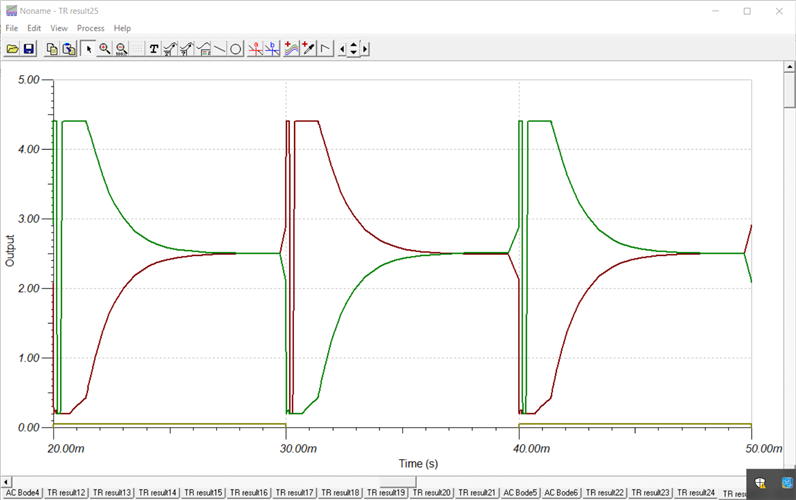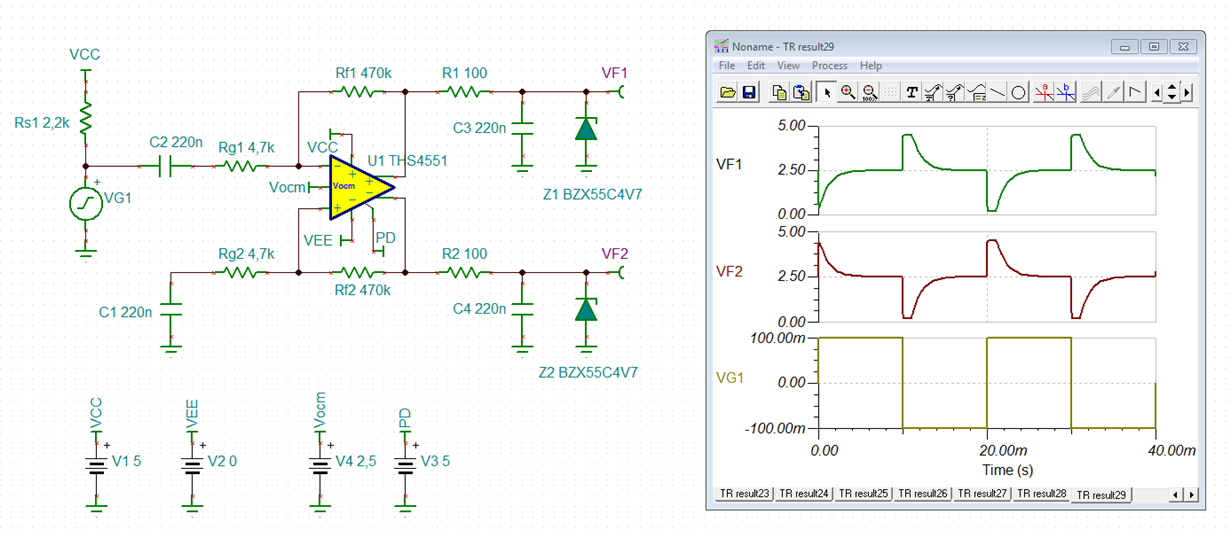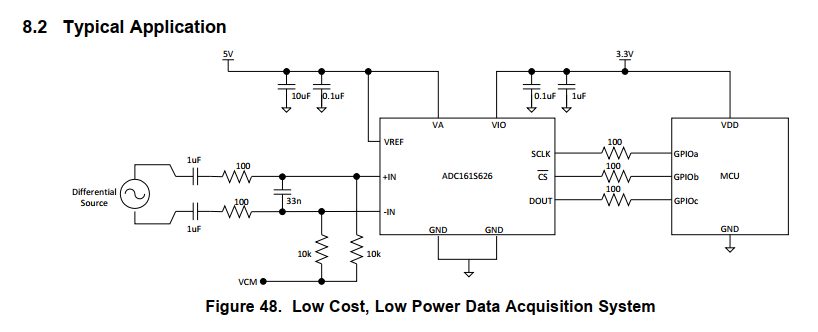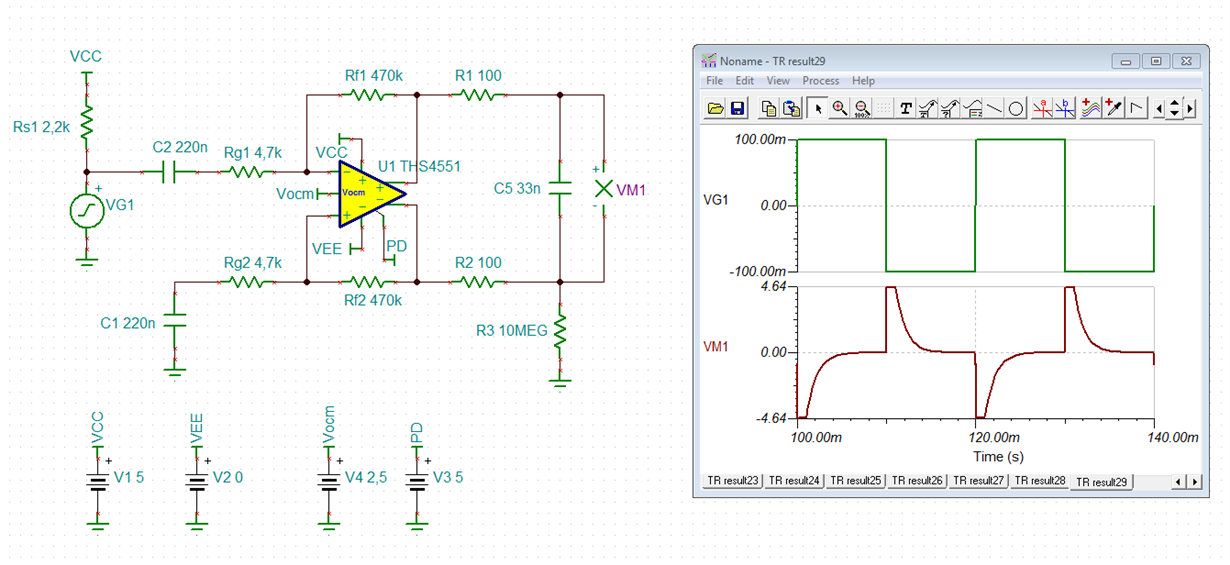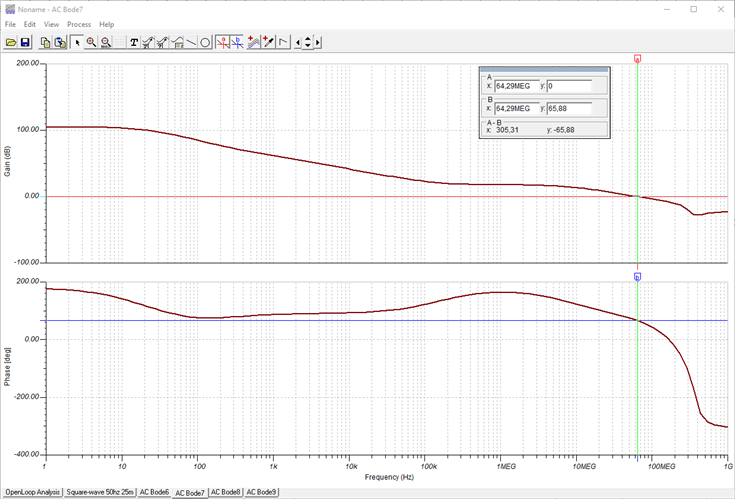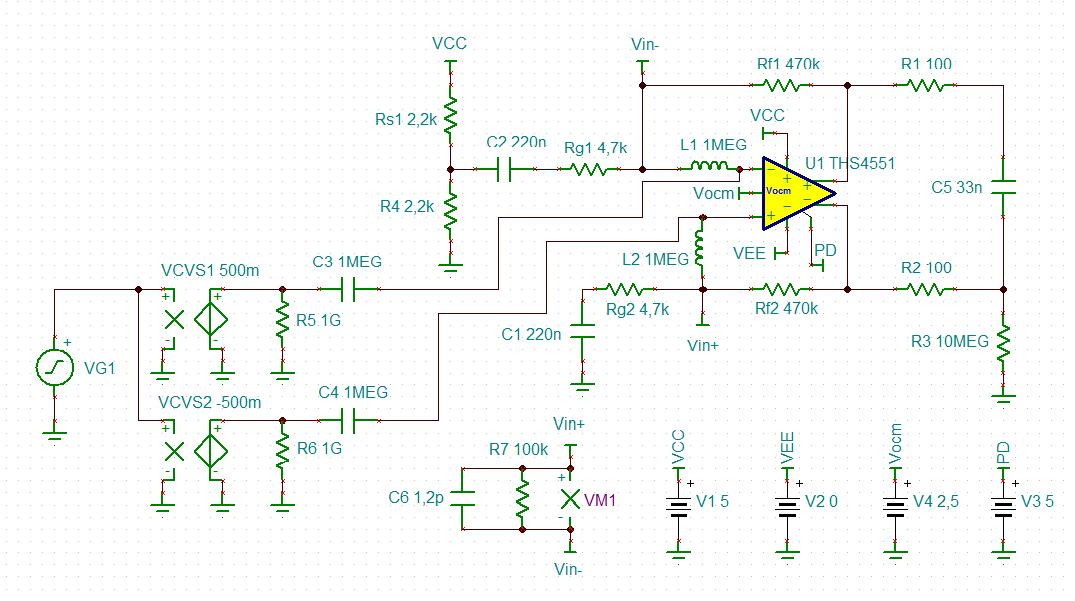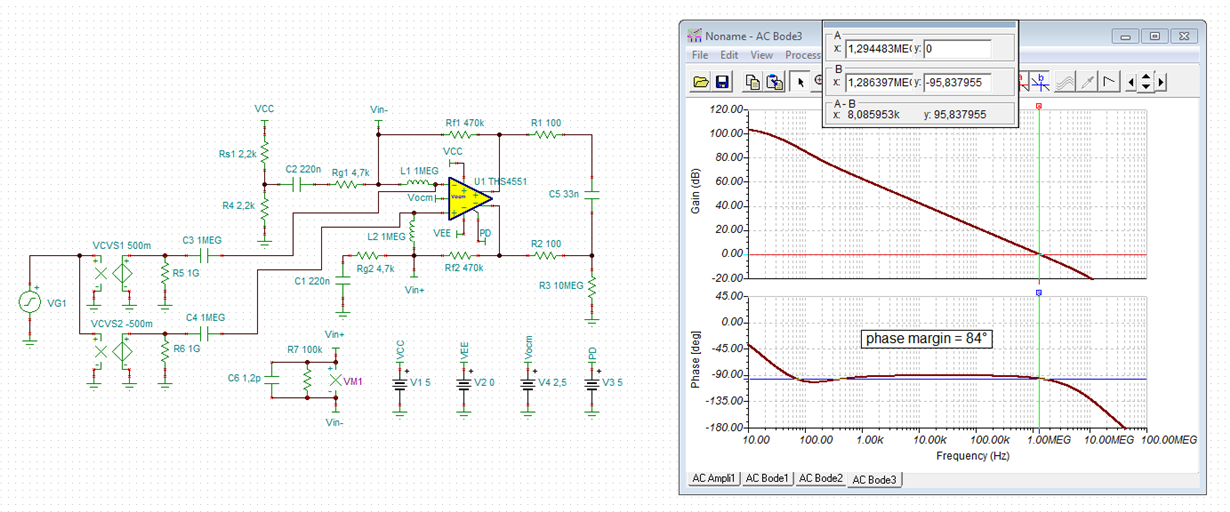Other Parts Discussed in Thread: NE5532, TL082, THS4531, ADC161S626
Hello everyone, I'm writing this because I've tried to understand why some things were happening when simulating a design and I've not reached a definite conclusion on the problem. My best guess is something to do with the THS4551 specifications that I'm probably not seeing.
What I'm trying to accomplish is to amplify and filter a sound signal coming from an electret microphone as seen in the attached image. This signal is AC cuopled and then feed to the differential amplifier as a single-ended input, in order to apply gain and filter the frequencies I'm not interested in. The voltage generated by the mic is around 50-100 mV peak to peak.
The bode curve that results from this setup does what I need, however, calculating the gain as Rf / Rg = 100, which would be 40dB, the bode doesn't quite get there (it's approx 26db).
If I try to increase the feedback resistance Rf (or decrease Rg) and simulate the transient response of a squared-wave of 50Hz and A=50mV the circuit turns unstable (I think).
Note: The limit on the top and bottom are caused by the zener diode, this is on purpose to avoid any overvoltage going through and damaging the ADC. I'm fairly certain this shouldn't affect the performance but I added them just in case.
The output will be directed to a multiplexer and then an ADC, both differential.
One additional thing is that I simulated the Open-Loop Gain and there's approximately 80° of Phase Margin at around 800kHz.
So finally I don't know if I'm missing something but I guess asking wouldn't hurt.
If you need any more information I'll gladly comment further.
Thanks,
Santiago




